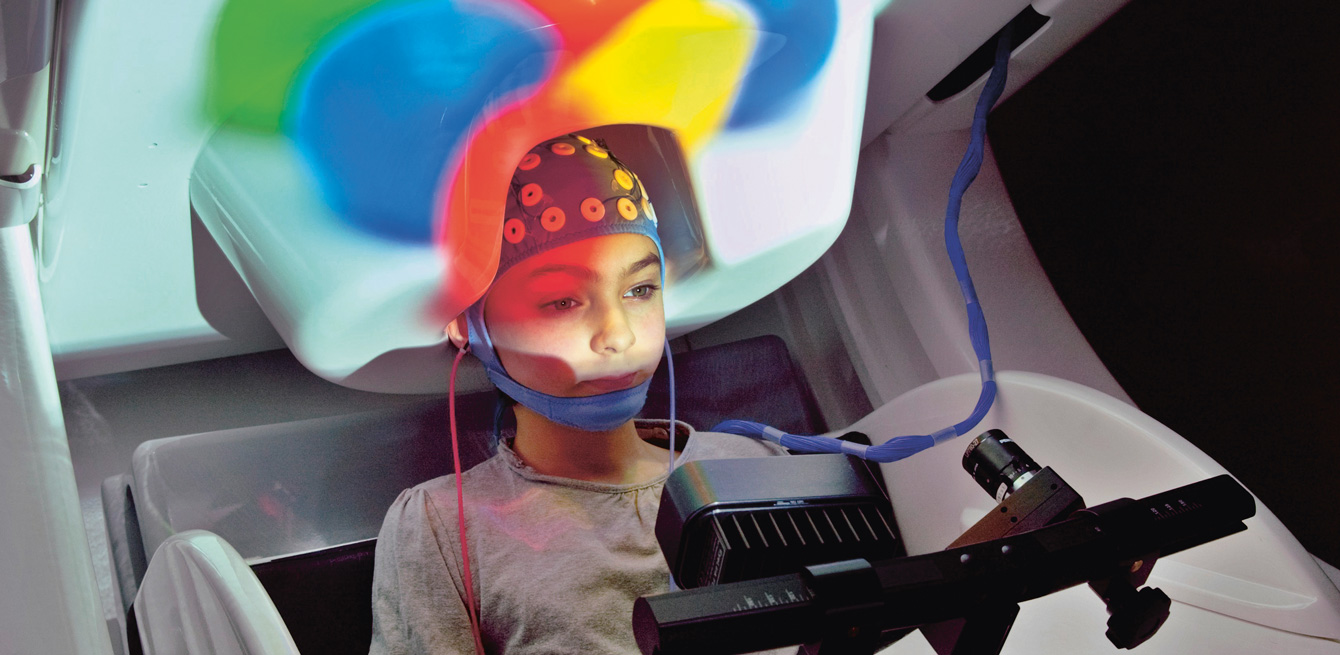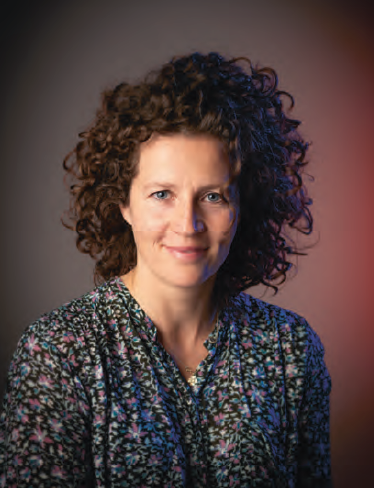
Our pupil movement, posture and gait say a lot about our health. Cameras now assist doctors in detecting these signs and making a diagnosis.
Whether we like it or not, surveillance cameras are now part of our daily lives. Medicine also makes increasing use of observation techniques and profiling. Alongside sensors and analysis systems, cameras are used to study conditions based on body movement from areas ranging from sports medicine to psychiatry.
Oculometry, or eye-tracking, is one technique that uses eye movement to study autism spectrum disorders (ASD). During social interactions, people with ASD have difficulty holding the gaze of others. This characteristic can be detected by identifying gaze direction when film sequences showing faces are projected on a screen. “Oculometry research shows that individuals with ASD will focus their gaze on the mouth instead of the eyes. As some patients with an ASD don’t speak, eye-tracking helps us see through their eyes and understand them better to advance research and clinical work,” says Nada Kojovic, a PhD student in the Marie Schaer’s laboratory at the University of Geneva. Eye-tracking is now used in clinical practice to support diagnosis.
Gait is another indicator of autistic disorder taken into account by doctors. Due to the neural circuits that control it, the locomotor system is intricately connected to the regulation of behaviour and emotions. Marine Jequier Gygax, neuropaediatrician and head of scientific clinical research at the research laboratory of the Cantonal Centre for Autism (CCA) of Lausanne University Hospital (CHUV), explains how Leo Kanner’s 1943 paper which first described autism already reported a characteristic gait.
“Around the age of one, little human beings start to stand and walk, but we don’t really know what’s happening in the neural circuits to achieve such a feat. Little research has been done on early cerebral development in this area, but we could learn a lot about these neurodevelopmental disorders and the relationship between the motor system and social behaviour.”
The social impairment that accompanies ASD is due to reduced connectivity within these circuits. To better understand these relationships, Dr Jequier Gygax analyses gait in early development – between 10 and 48 months – and pairs that data with data from cerebral circuits using imaging and electroencephalography. She eventually plans to identify early markers of ASD in order to develop treatments.
Observing the patient’s movements is also logically crucial in physical medicine and rehabilitation, which aim to restore lost functions, such as learning to use a dysfunctional limb with movements that involve other muscles. “It’s important to ask patients what’s bothering them, to listen to them, and especially to watch them walk and observe how they take off their clothes in order to make a diagnosis,” says Vincent Gremeaux-Bader, head of the Sports Medicine Center at the CHUV’s physical medicine and rehabilitation unit. “Even though ultra-sophisticated imaging techniques can help the diagnosis, we’re not treating images. We’re treating patients.” Analysing posture and anatomy also provides information about how well the patient might respond to physiotherapy and about the potential manifestation of future conditions. For example, bow legs are an indicator of a possible overload on the internal part of the knees and a predisposition to complications.
In addition to the doctor’s eyes, cameras and software precisely measure space and time parameters and joint rotations as the patient walks or engages in other activities. At CHUV, the Swiss BioMotion Lab, jointly directed by Brigitte Jolles-Haeberli and Julien Favre, is on the cutting edge of gait analysis research. The laboratory works with a system similar to that used in 3D animation.
“A network of 14 infrared cameras collects information from markers placed on the body. The processing software takes the characteristics of the network to determine each marker’s location in space and derive kinematic data,” says Julien Favre, a biomechanics engineer.
The system is mainly used for research, for example to better understand and treat knee arthritis or low back pain. The Swiss BioMotion Lab’s two flagship projects have rounded up an interdisciplinary team to understand why some people are more likely to develop these conditions, to better prevent and treat them. Teaching patients new ways to walk or perform day-to-day activities that involve the spine are emerging as important therapeutic solutions.
Does this more extensive use of cameras in medicine mean that our health is being watched through video surveillance? Decades of research on human movement have helped us understand certain pathological mechanisms. By combining video images with genetic, imaging and behavioural factors, medical professionals can diagnose issues more accurately. Technologies currently used at the Swiss BioMotion Lab and eye-tracking are not video surveillance. They are sophisticated systems designed for research. But Dr Favre says that other technologies are developing fast.
“We see more medical applications based on 3D cameras, such as those used by the Kinect system developed by Microsoft for video games, which detect body shapes and measure the skeleton’s movement without a marker.”
Our movements even appear to reveal our feelings. If research advances in the interest of medicine, some developments suggest that our society could plunge into a dystopia worthy of Person of Interest, an American series in which the people of New York are being watched by software using the data streams from surveillance cameras to predict crimes and identify those implicated. But in this case it would be for health profiling.
Two issues are involved in the challenge of keeping older patients at home: “The lack of healthcare professionals and the plummeting decline of available family caregivers,” says Christophe Büla, chief of the CHUV Geriatrics Service. Technology offers medicine one option to meet those challenges. Research projects are out there, especially to provide monitoring and gait analysis solutions. “Notwithstanding the ethical issues it raises, we currently have the technology to monitor weight shown on a scale, how often a refrigerator opens, whether a person is sitting or standing, or track their walking pace,” the geriatrics expert says. The idea is to watch factors that can predict a fall or the development of a situation of weakness, and to take proactive action before it happens.
